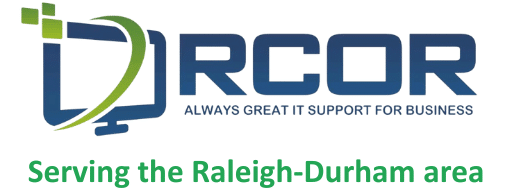Microsoft Teams has quickly become a must-have in many modern workplace environments. With the increasing use of Teams by teams across an organization, some common Microsoft Teams misconceptions are still being made by the average user; as such, they may be underutilizing its power.
By educating yourself about the more common misconceptions, you can unlock better ways to collaborate within your organization, improve security, and operate more efficiently.
In this guide, we will address the top 7 commonly misunderstood things people think they know about Microsoft Teams and explain how you can use them to their fullest capacity.
1. Misconception: Microsoft Teams Is Only for Meetings
A common misconception about Microsoft Teams is that it’s simply a meeting app. While Teams offers powerful video conferencing features, it’s much more than that. It serves as a central hub for communication, document sharing, and project management.
Beyond online meetings, Teams connects employees, departments, and tools in one place. Through channels, chat threads, and file-sharing integrations with Microsoft 365, it helps teams collaborate in real time without jumping between multiple apps. For instance, quick decisions that might take days over email can now happen instantly through Teams chat.
2. How Microsoft Teams Enhances Collaboration
Microsoft Teams transforms traditional workflows by centralizing communication and resources. Users can co-edit Word or Excel files directly within Teams, organize conversations around specific projects, and create task boards using built-in integrations like Planner or To-Do.
For remote and hybrid teams, this means everything—from project updates to document approvals—happens in one secure environment. Managers can track progress, employees can share insights, and everyone stays aligned without information getting lost in lengthy email threads.
When used strategically, Teams becomes a digital workspace that simplifies daily operations, reduces context-switching, and strengthens team productivity.
3. Misconception: Microsoft Teams Lacks Strong Cybersecurity
Another Microsoft Teams misconception is that it doesn’t provide sufficient security. This belief usually comes from confusion around cloud services and data privacy. In reality, Microsoft Teams is built on Microsoft Azure’s secure infrastructure and follows some of the most rigorous compliance standards in the industry.
Data is encrypted both in transit and at rest, meaning messages, files, and calls are protected from unauthorized access. The platform also offers robust compliance tools, activity monitoring, and audit logs, which allow IT administrators to detect suspicious activity early.
Organizations can further enhance their security posture by using features like multifactor authentication, role-based access control, and regular permission audits. With proper configuration and training, Teams can serve as a secure communication hub that aligns with corporate cybersecurity standards.
4. Best Practices for Keeping Teams Secure
Protecting data in Microsoft Teams requires a proactive approach. IT departments should:
Use role-based permissions to limit access to sensitive channels.
Enforce multifactor authentication to prevent unauthorized logins.
Educate users about phishing and password hygiene.
Regularly review audit logs for unusual behavior.
Keep the platform up to date to benefit from Microsoft’s latest security patches.
By following these measures, businesses ensure that Teams remains not only collaborative but also fully compliant and resilient against modern cybersecurity threats.
5. Misconception: Deploying Microsoft Teams Is Complicated
One of the biggest misconceptions Microsoft Teams users hold is that deployment requires extensive technical expertise. While setup can seem daunting at first, Microsoft provides step-by-step deployment guides and automated tools that simplify the process.
Start by assessing your organization’s existing IT environment, defining departmental needs, and planning channel structures that align with business goals. Automation scripts can handle account setup and configuration, saving valuable time.
Engaging an experienced Microsoft partner or managed service provider can further streamline deployment, ensuring Teams is configured securely and efficiently from day one.
6. Supporting User Onboarding and Adoption
A successful rollout depends not only on setup but also on user adoption. Microsoft’s Training Center offers free tutorials and best-practice resources for all experience levels. Additionally, organizations can host live training sessions or webinars tailored to their workflows.
Creating a dedicated “Teams Support” channel within the platform is another effective tactic. It allows employees to ask questions, share tips, and collaborate on problem-solving. Ongoing training and open communication help new users feel confident and make full use of the platform’s features.
Providing strong onboarding support transforms Teams from a simple communication tool into a true collaboration ecosystem that empowers the entire organization.
7. Misconception: Microsoft Teams and Skype Are the Same
Because both tools enable messaging and video calls, many assume Microsoft Teams is just the new version of Skype. However, Teams is a far more comprehensive platform designed for business collaboration.
While Skype focuses mainly on person-to-person communication, Teams integrates seamlessly with Microsoft 365, allowing users to manage files, organize projects, and maintain compliance—all within one secure environment. Microsoft has also phased out Skype for Business, positioning Teams as the enterprise standard for communication and productivity.
Teams includes advanced features like channel organization, app integration, and security compliance tools—capabilities Skype simply doesn’t offer. Understanding this difference helps organizations leverage the full power of Teams for professional collaboration.
Conclusion
Dispelling the biggest misconceptions Microsoft Teams users hold is key to unlocking its full potential. Far from being “just a meeting app,” Teams is a secure, versatile, and highly integrated workspace that supports modern collaboration and efficient communication.
By embracing its broader capabilities—collaboration tools, security measures, and deployment resources—businesses can streamline operations and empower employees to work smarter.
Want to maximize your team’s performance with Microsoft Teams? Contact our experts today and learn how to implement, secure, and optimize your Teams environment for long-term success.

